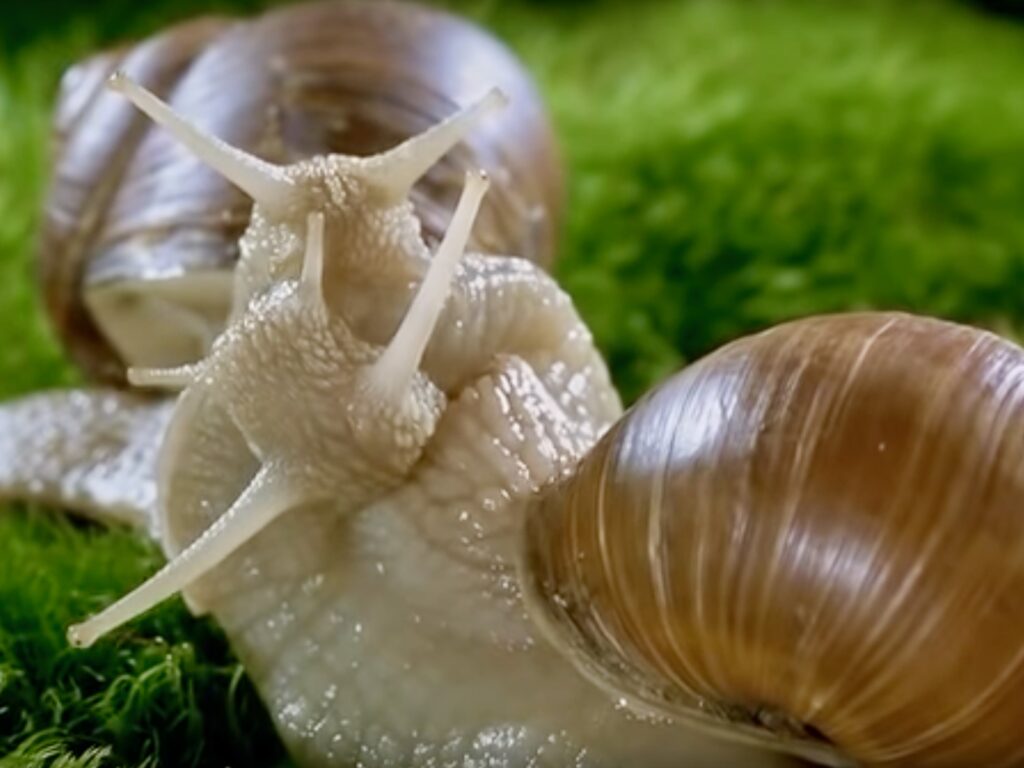L’amour des escargots
Back to Malawi, and while my assistants follow an Elephant to the Kulamba ceremony in Zambia, I am enjoying the otium of Little China. Malawi synchronicity has allowed something rather wonderful to result. (Gentle Reader – What follows is the substance of a letter to a dear friend and former colleague in England.)
Yesterday (Thursday) afternoon I had mentioned to S. that I felt, in the face of X.’s new and mandatory […], somewhat like Philomel before Tereus: intellectually, at least. This (Friday) morning I had forwarded S.’s contact details to B., resident at my Oxon. house: S. would like to use […] as an accommodation address; and, in his way, I was answered by B. with images from the much loved garden, especially of snails following in each other’s trails - out of companionship, he believes.
At this point my thoughts returned, across decades, to Microcosmos: Le peuple de l’herbe (1996), a film written and directed by Claude Nuridsany and Marie Pérennou, produced by Jacques Perrin, and especially to its depiction of L’ amour des escargots, which is a favourite scene:
The music (click on the image) becomes the loveliness of the snails’ dance – and it occurred to me that I had never pursued it. That has been the long and wonderful task of this (Friday) afternoon. It is, I discover, the work of Bruno Coulais, who composed in the style of Giacomo Puccini - I don’t know how closely - for Marie Kobayashi. However, I was interested in the text and I discovered, if not the story of Philomel, at least a poem that must relate to hers… The words are those of Francesco de Lemene (1634 – 1704), a writer of canzonets. Here they are as printed in Cesare Vignati’s 1853 anthology of Italian letters (they appear also in England in an 1850 anthology – Sabrinae Corolla – edited for Shrewsbury School by Ben. Kennedy, no less):
Offesa verginella,
Piangendo il suo destino,
Tutta dolente e bella,
Fu cangiata da Giove in augellino
Che canta dolcemente, e spiega il volo:
E questo è l’ usignuolo.
In verde colle udi con suo diletto
Cantar un giorno Amor quell’ augelletto;
E del canto invaghito
Con miracol gentil prese di Giove
Ad emular le prove.
Onde, poi ch’ ebbe udito
Quel musico usignuol, che si soave
Canta, gorgheggia e trilla,
Cangiollo in verginella: e questa è Lilla.
The clip omits the last line - but I imagine that a problem with the clip. (My copy of Microcosmos is in Oxon..)
The only translation available online seems to be in Russian. My Italian is not good at all, but here is the current attempt in English (it will improve):
A little maid, shamed and defiled,
All sorrowful and comely,
Was lamenting her lot, when she
Was changed by God to a small bird,
That singeth sweetly, sheweth off its flight:
Behold - it is the nightingale.
On a green hill did Love hear sing one day
This little bird, to his delight;
And, impassioned by the song,
He undertook, with a kind miracle,
To match the handywork of God.
Whereon (for heard he had
This nightingale’s music, that singeth so
Pleasantly, warbling and trilling)
He changed it to a little maid: behold - she is Lilla.
(I am least sure about ‘prese di Giove / Ad emular le prove’.)
I hope that Gentle Reader will agree that this (the original) is worthwhile - and that reflection on beauty and chastity, love, fall and redemption, is strangely appropriate to L’ amour des escargots. In passing, the finest nightingale I have ever heard, while awaiting a late train, was resident at the far end of one of the platforms of Winchester railway station.
But who is Lilla? It would be excellent if she were Philomel, the story a continuation of Philomel’s translation to a nightingale (or swallow), but I can find no evidence for this. Otherwise, there is, of course, the anonymous poem that Franz Schubert set as Lilla an die Morgenröte (1815), which presents Lilla (another Lilla? the same?) almost as priestess of nature, including nightingales:
Wie schön bist du, du güldne Morgenröte,
Wie feierlich bist du!
Dir jauchzt im festlichen Gesang der Flöte
Der Schäfer dankbar zu.
Dich grüsst des Waldes Chor, melodisch singet
Die Lerch’ und Nachtigall,
Und rings umher von Berg und Tal erklinget
Der Freude Widerhall.
[How fair thou art, thou golden glow of morning, how glorious thou art! The shepherd rejoiceth to thank thee with the festive song of the flute.
Thee haileth the woodland choir. In harmony sing lark and nightingale, and round about, from hill and dale, resoundeth the echo of joy.]
Lilla in Italian is Lilac, but I like to think Lily not out of the question: Italian Giglio looks like a parallel development of Latin Lilium - or at least there is the possibility of false etymologisation of an imported word (Lilac is Persian, I believe) on the basis of Lilium. Sources online - I don’t know their authority - suggest that Lilla in English is associated, i) with Elizabeth, ii) with Lily, and the Lily is more obviously appropriate an image to the poem (its purity, the innocence of virginity restored) than the Lilac.
I don’t think I can do more from Little China... In the absence of Der kleiner Pauly (or access to Der grosser), a Companion to Schubert or an historical Italian dictionary, it would be pleasant to suppose that Francesco de Lemene’s sadly beautiful poem is intended for a little maid with a name like – I don’t know – Lilian […]. Gentle reader – My friend and former colleague, the addressee of the letter, has a daughter who is indeed a Lilian.
